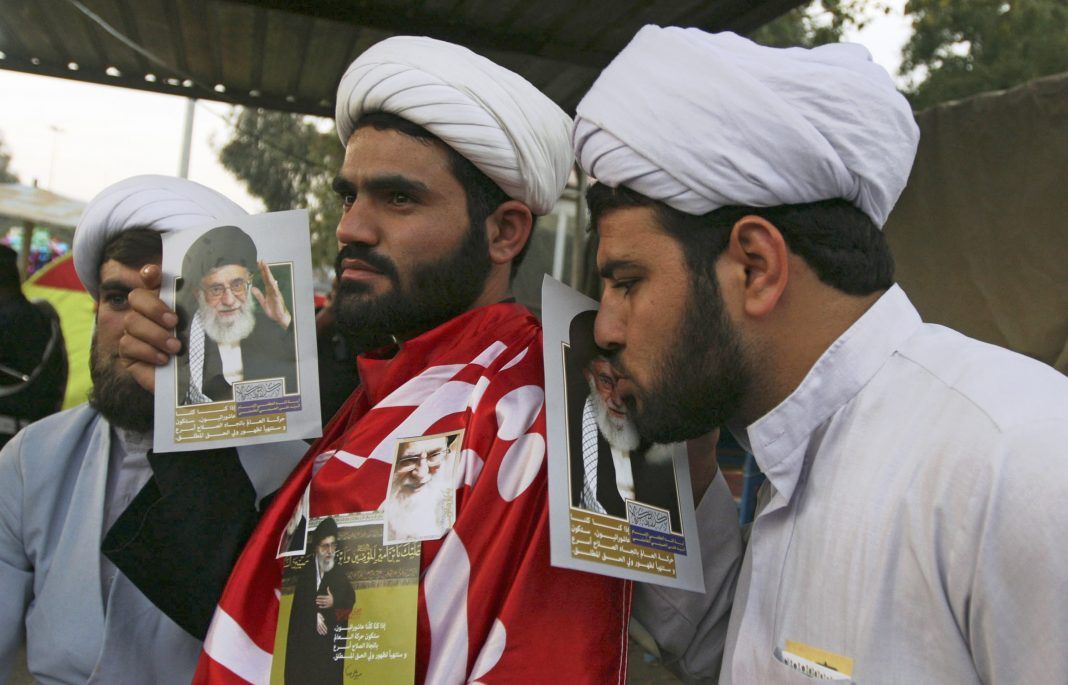Iranian President Hassan Rouhani submitted his government’s 2020-21 draft budget of nearly $39 billion to the Majlis (Iranian Parliament) on December 8. The start of the budget year is March 21, coinciding with the Persian New Year.
According to Mr. Rouhani, the new budget significantly reduces Iran’s dependency on oil exports.
“This is a budget to resist sanctions, with the least dependence on oil,” Rouhani told the Majlis. “It announces to the world that despite sanctions, we can manage the country.”
Iran’s oil exports dropped from 2.5 billion barrels per day (bpd) in 2017 to 400,000 bpd under U.S.-imposed sanctions.
According to the International Monetary Fund (IMF), the government’s 2020-21 budget deficit will be around 5.1 percent of gross domestic product (GDP).
Neither U.S. sanctions, nor a massive drop in oil revenue, nor the fiscal deficit forecast have dissuaded the government from earmarking $1.25 billion to seminaries, religious institutions, Islamic universities, Shia research centers, and the propaganda apparatus of the Islamic Republic, which includes the state-run media.
[aesop_image img=”https://kayhanlife.com/wp-content/uploads/2019/12/2017-06-23T154605Z_198384818_RC1283DD0F00_RTRMADP_3_RELIGION-RAMADAN-ALQDS-IRAN-scaled.jpg” panorama=”off” credit=”An Iranian cleric attends the annual pro-Palestinian rally marking Al-Quds Day in Tehran, Iran. REUTERS./FILE PHOTO” align=”center” lightbox=”off” captionsrc=”custom” captionposition=”left” revealfx=”off” overlay_revealfx=”off”]
The following is the breakdown of the government’s 2020-21 funding for religious institutions, as reported by the Iranian Students News Agency (ISNA) on December 8:
- Supreme Council of Seminaries: $110 million.
- Seminaries Service Center (which supports seminary students and pays for their insurance): $283 million.
- Women’s Religious Seminaries: $49 million.
- Khorasan Seminaries: $20 million.
- Qom Seminary’s Office for Promoting: $36 million.
- Al-Mustafa International University (MIU) (established in 1979 in Qom. The university has branches in a dozen countries. Many students from Africa and Southeast Asia study at the university every year): $75 million.
- Islamic Culture and Public Relations Organization (operating under the auspices of the Ministry of Culture and Islamic Guidance): $57 million.
- The World Forum for Proximity of the Islamic School of Thought (WFPIST) and Tehran’s Ecumenical Society (established on the orders of Iran’s Supreme Leader Ayatollah Ali Khamenei in Tehran): $5 million.
- Ahl al-Bayt World Assembly (Shia organization established in 1990 to promote unity among Muslims): $5 million.
- Ahl al-Bayt International University: $2.6 million.
- Friday Prayers Leaders Policy Council: $7 million.
- Center for Mosques Affairs: $7.3 million.
- Prayers Headquarters: $3.7 million.
- Headquarters for Promotion of Virtue and Prevention of Vice: $7.5 million.
- Coordination Council for Promoting Islam: $47.6 million.
- Cultural Headquarters for Promoting Islam: $20 million.
- Computer Research Center for Islamic Sciences: $3.5 million.
- Institute for Islamic Encyclopedia: $1.2 million.
- Foundation for Islamic Encyclopedia: $2.1 million.
- Research Institute for Islamic Maaref (Education): $4.7 million.
- Center for the Islamic-Iranian Model of Progress: $1.7 million.
- Ayatollah Marashi Najafi Library: $15.6 million.
- Islamic Maaref (Education) University: $32.2 million.
- Quranic Cultural Development Partnership Funds: $4.7 million.
- University for Quranic Maaref (Studies): $8.7 million.
- University of Islamic Denominations: $4.7 million.
- Imam Sadegh University: $31.2 million.
- Offices of Leader’s Representatives to Universities: $32.2 million.
- Imam Khomeini Research Institute: $4.7 million.
- Institute for the Publication of Imam Khomeini’s Works: $6.1 million.
- The Islamic Republic of Iran Broadcasting (IRIB): $472 million.
- The Islamic Republic News Agency (IRNA): $24.4 million.
The $1.25 billion set aside for religious institutions in the government’s 2020-21 budget far exceeds funding for more urgent plans, including education, healthcare, and social security and welfare system.
For instance, while the government’s draft budget earmarks a hefty $110 million to the Supreme Council of Seminaries, it allocates $235,000 to help elementary schools in deprived regions, $7.8 million to Iran’s Crisis Management Organization, $1.6 million to hospitals in poor and underprivileged areas, $2 million to the Forest, Range and Watershed Management Organization, $6.8 million to rare-disease research and $11 million to fight air pollution.
[Translated from Persian by Fardine Hamidi]


